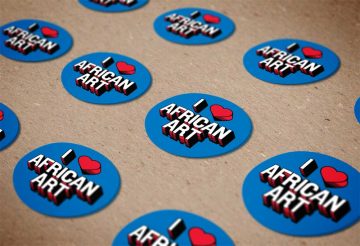Related pages: Studying Yoruba Art: Virtuoso Artists | Comparing Animal-skin Masks: Nigeria’s Cross River Region
The àṣẹ of the Walt Disney–Tishman Collection has fueled the “inner eyes” of art historical researchers for decades
—Rowland O. Abiodun, 2017
How do collections inform what we know about Africa’s arts, artists, and global history?
The collection formed by Paul and Ruth Tishman and acquired by the Walt Disney Company in 1984 has, since the mid-1960s, greatly influenced the study of African art. Through exhibitions and publications, the Walt Disney–Tishman African Art Collection has informed the study of African art history and set high standards for aesthetic quality.
The majority of the artworks the Tishmans collected are from West and central Africa, reflecting the collecting practices of their time. Particular collection strengths include crest masks from Nigeria’s Cross River region and diverse objects by Yoruba artists of southwest Nigeria.
Scholar Rowland O. Abiodun, the John C. Newton Professor of the History of Art and Black Studies at Amherst College, has observed, “Yorùbá artists must possess the ‘inner eye’ (ojú-inú) by which they can discern the ‘essential nature’ (ìwà) . . . of their artistic subject. With ojú-inú, an artist may . . . imbue it with the àṣẹ of the subject. Through àṣẹ (the primordial life-force believed to be inherent in all conscious beings) . . . art affects the world.”
Bullom or Temne artist
Northern or Southern Province, Sierra Leone
Hunting horn
1494–1500
Ivory, metal
64.2 x 16.4 x 9 cm (25 1/4 x 6 7/16 x 3 9/16 in.)
Gift of Walt Disney World Co., a subsidiary of The Walt Disney Company, 2005-6-9
IVORY | Global Africa. This priceless work of art, one of three surviving horns sculpted by an unidentified master artist, documents early international patronage of African artists. Its material and superb artistry can be attributed to Sierra Leone, while other features suggest it was made by a Bullom or Temne artist for a European client.
The placement of its mouthpiece on the end rather than the side, its suspension lugs, and the scenes—inspired by European prints and carved in relief—of a European hunt and the theme of the Good Shepherd all suggest that the horn was carved for a foreigner. The heraldic shields and inscriptions carved near the base place its date between 1494 and 1500 and identify it as a royal gift from Crown Prince Manuel I of Portugal to King Ferdinand V of Castile and Aragon.

